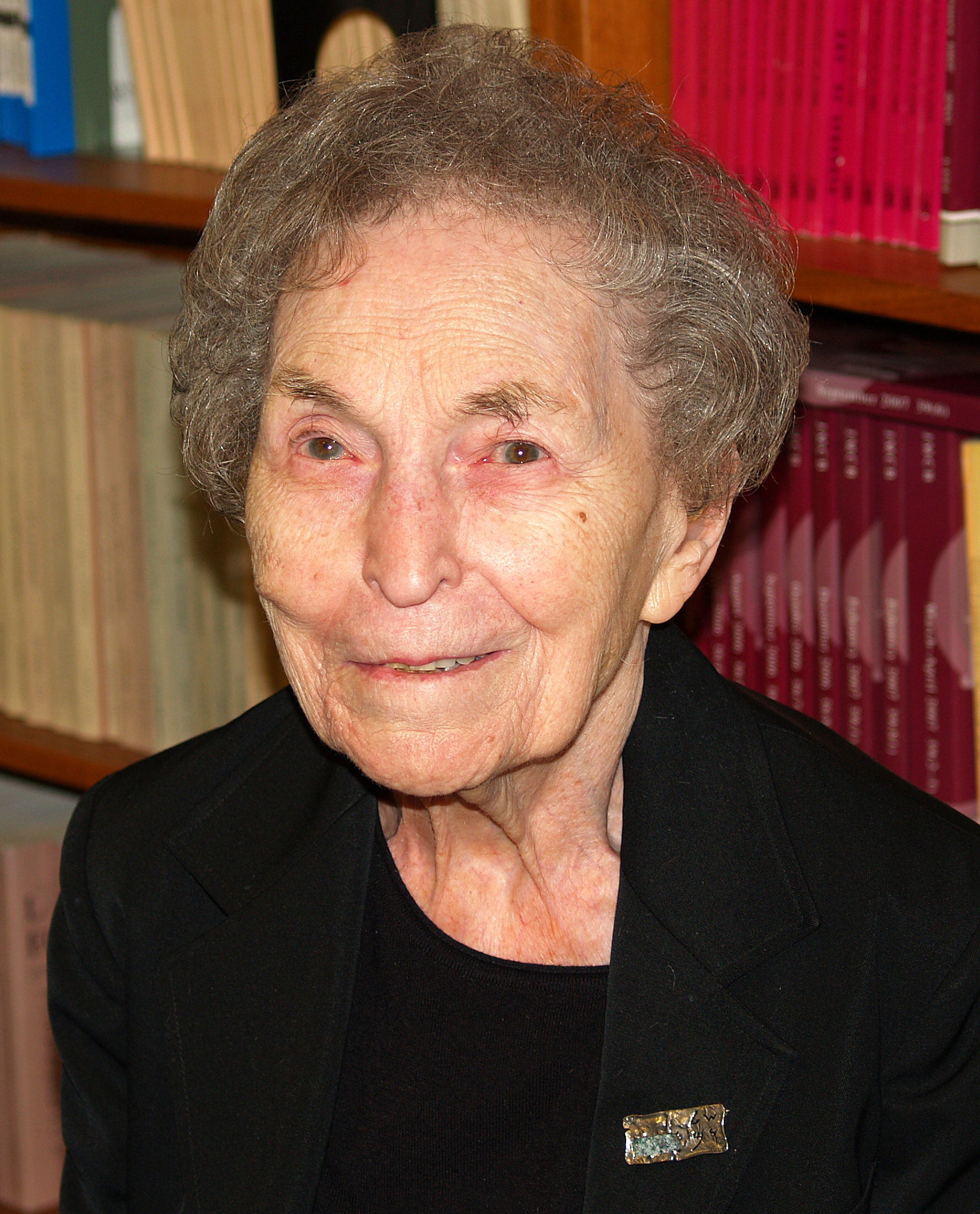Schwartz’s Early Life and Education
Anna Jacobson Schwartz (1915–2012) was born Anna Jacobson in the Bronx, New York City, into a family of Jewish immigrants who had arrived in the US from Eastern Europe a short time before her birth. Schwartz’s father was a rabbi, who also worked as a kosher meat supervisor for the Swift Foods company.
Schwartz was the third of five children. She attended Hebrew school for six years, beginning when she was 15. It was at a Jewish summer camp associated with this school that she met her future husband, Isaac Schwartz.
Schwartz was intellectually precocious, obtaining her bachelor’s degree from Barnard College (then Columbia University’s “sister school”) in 1934, at the age of 18. She then attended graduate school at Columbia University itself, receiving her master’s degree in economics the following year, in 1935, at the age of 19.
The then–Anna Jacobson married Isaac Schwartz in 1936. Her husband, who had also attended Columbia, worked as a businessman in the import trade and later as a financial officer. The couple had four children.
In the early 1960s, Schwartz returned to Columbia, obtaining her PhD in 1964.
Schwartz’s Career
In 1940, Scwartz published her first academic article, “British Share Prices, 1811-1850” (see “Selected Writings by Schwartz” below).
She worked briefly for the US Department of Agriculture, beginning in 1936, before joining the Columbia University Social Science Research Council, where she served until 1941.
In 1941, Schwartz became a member of the research staff at the National Bureau of Economic Research (NBER), an organization with which she maintained ties for the rest of her life. She mostly worked out of NBER’s New York City office.
At the start of her tenure at NBER, the institution was focused on the study of business cycles. Schwartz became involved primarily with the monetary aspects of this phenomenon. Many years later, Schwartz was appointed director of the US Gold Commission.
Often working in tandem with University of College professor, Milton Friedman, and others, Schwartz published a remarkable series of detailed historical studies of the development of money and monetary theory. Schwartz’s research project of unparalleled scope and importance constitutes the heart of contribution to political economy.
Schwartz’s Ideas
Schwart’s work in economics was broadly focused on the role of government in monetary policy, especially in its historical dimension. This involved studying measures of bank output and the behavior of interest rates, deflation, and monetary standards. She also wrote on the transmission of business cycles and inflation from one country to another.
One of the chief conclusions drawn by Schwartz from her historical researches was that the stability of the financial system is based squarely on the stability of the price level.
Based on evidence stretching back some 200 years, Schwartz showed that isolated business failures are not injurious to the economy, so long as they do not spread through the financial sector. Therefore, Schwartz was opposed to government bailouts of individual financial institutions. She felt that unsound institutions should be allowed to fail in order to isolate the contagion, creating a cordon sanitaire around sound ones.
Selected Writings by Schwartz
1. Works Authored or Co-authored by Schwartz
“British Share Prices, 1811–1850” (as Anna Jacobson), with Arthur D. Gayer and Isaiah Finkelstein, Review of Economics and Statistics, 22: 78–93 (1940).
Currency Held by the Public, the Banks, and the Treasury, Monthly, December 1917–December 1944, with Elma Oliver (1947).
The Growth and Fluctuation of the British Economy, 1790–1850: An Historical, Statistical, and Theoretical Study of Britain’s Economic Development, with Arthur D. Gayer and W.W. Rostow (two volumes) (1953).
A Monetary History of the United States, 1867–1960, with Milton Friedman (1963).
The Great Contraction, 1929–1933, with Milton Friedman (1965).
Monetary Statistics of the United States: Estimates, Sources, Methods, with Milton Friedman (1970).
From New Deal Banking Reform to World War II Inflation, with Milton Friedman (1980).
Monetary Trends in the United States and the United Kingdom: Their Relation to Income, Prices, and Interest Rates, 1867–1975, with Milton Friedman (1982).
The International Transmission of Inflation, with Michael R. Darby, James R. Lothian, Arthur E. Gandolfi (1983).
“The Importance of Stable Money: Theory and Evidence,” with Michael D. Bordo, Cato Journal, 3: 63–91 (1983).
“Has Government Any Role in Money?,” with Milton Friedman, Journal of Monetary Economics, 17: 37–62 (1986); reprinted in Anna J. Schwartz, ed., Money in Historical Perspective. Chicago: University of Chicago Press; pp. 289–314 (1987).
“A Century of British Market Interest Rates, 1874–1975,” in Anna J. Schwartz, ed., Money in Historical Perspective. Chicago: University of Chicago Press; pp. 152–164 (1987).
Do Currency Boards Have a Future? (1992).
Monetarism and Monetary Policy (1992).
“IS-LM and Monetarism,” with Michael D. Bardo, NBER Working Paper 9713 (2003).
Strained Relations: US Foreign-Exchange Operations and Monetary Policy in the Twentieth Century,with Michael D. Bordo and Owen F. Humpage (2015).
2. Books Edited or Co-edited by Schwartz
A Retrospective on the Classical Gold Standard, 1821–1931, with Michael D. Bordo (1984).
Money in Historical Perspective (1987).
The Search for Stable Money: Essays on Monetary Reform, with James A. Dorn (1987).
Commodity Monies (two volumes) (1992).
Schwartz Festschrift
Bordo, Michael D, ed., Money, History, and International Finance: Essays in Honor of Anna J. Schwartz (1989).
